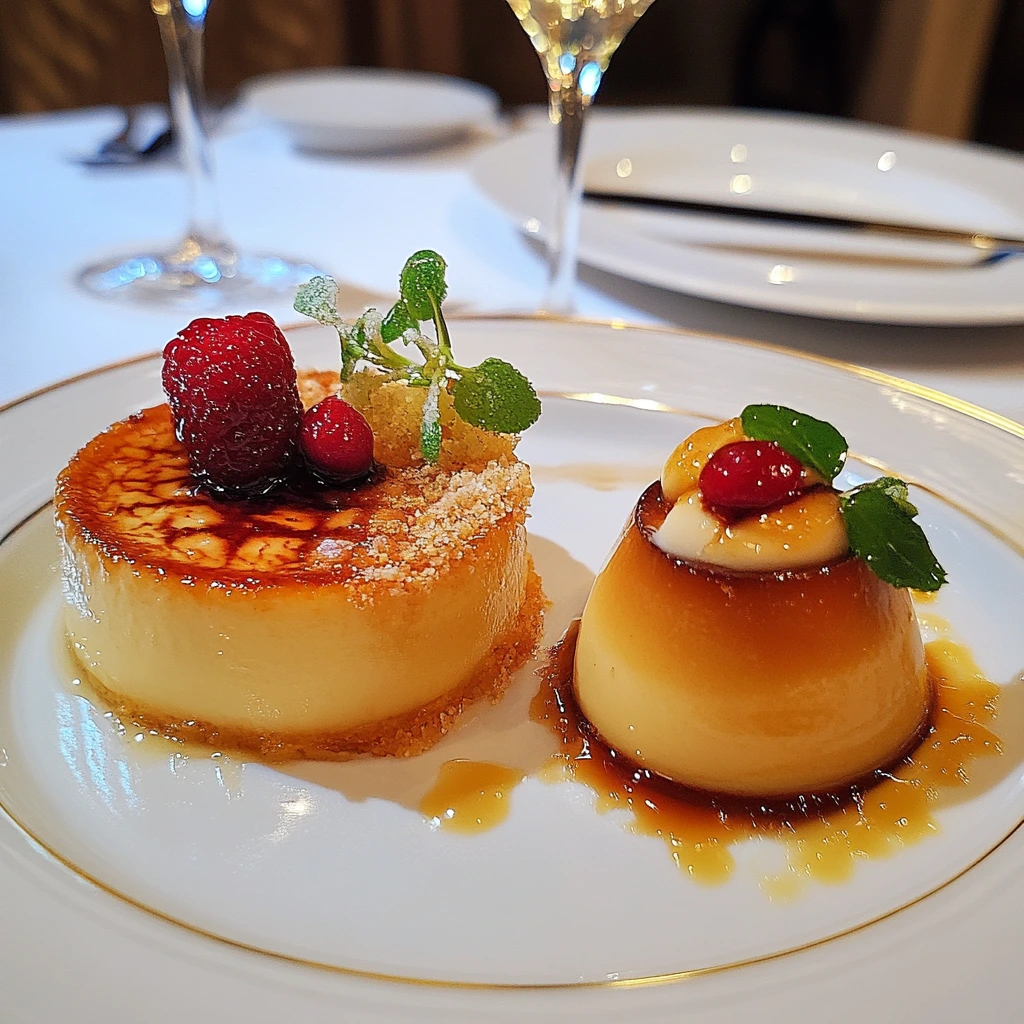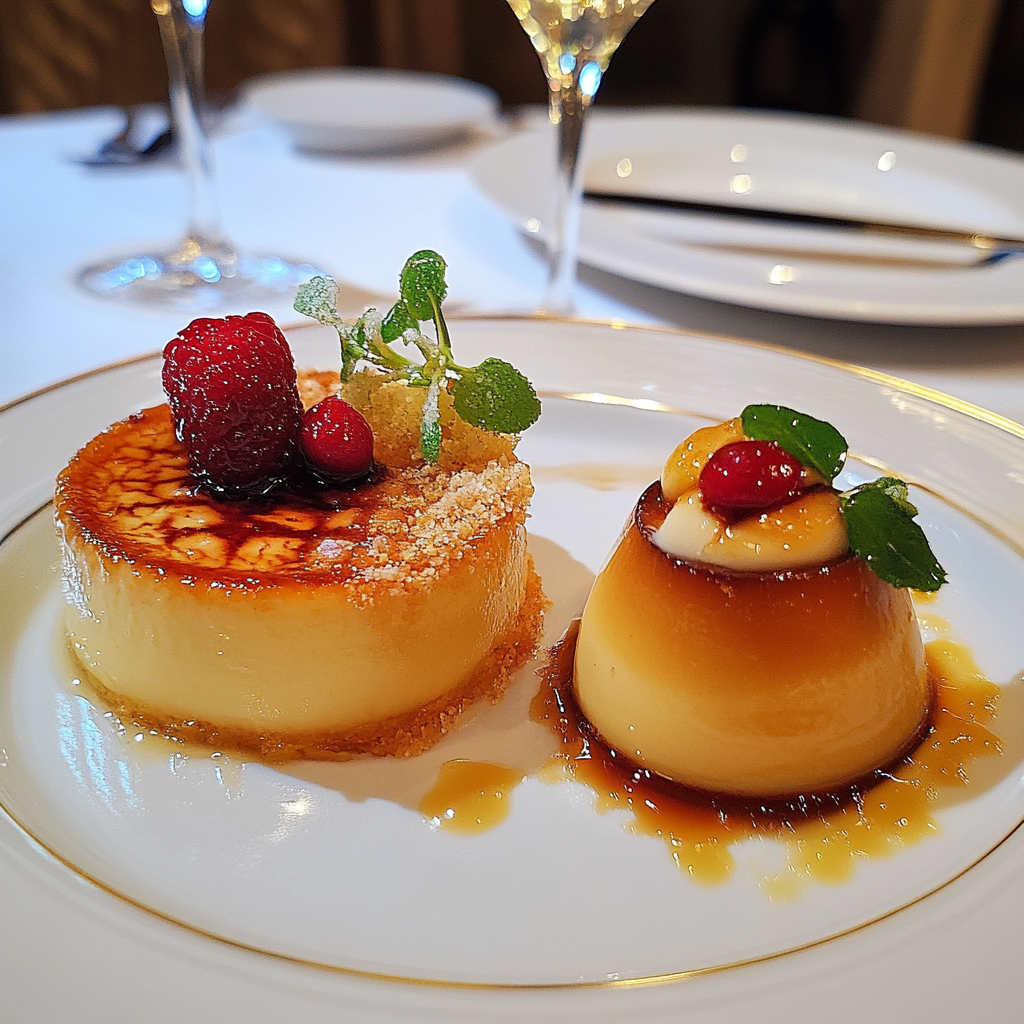
Introduction to Crème Brûlée and Flan
Crème brûlée and flan are two of the most beloved custard-based desserts, enjoyed worldwide for their creamy textures and rich flavors. Despite their similarities, these two classics differ in preparation, presentation, and cultural significance. While crème brûlée is celebrated for its caramelized sugar crust, flan is known for its soft caramel sauce.
In this guide, we’ll explore the distinct characteristics of each dessert, from their ingredients to their origins. If you’re inspired to create one of these decadent desserts at home, check out this easy-to-follow Crème Brûlée Recipe for a perfect result.
What Is Crème Brûlée?
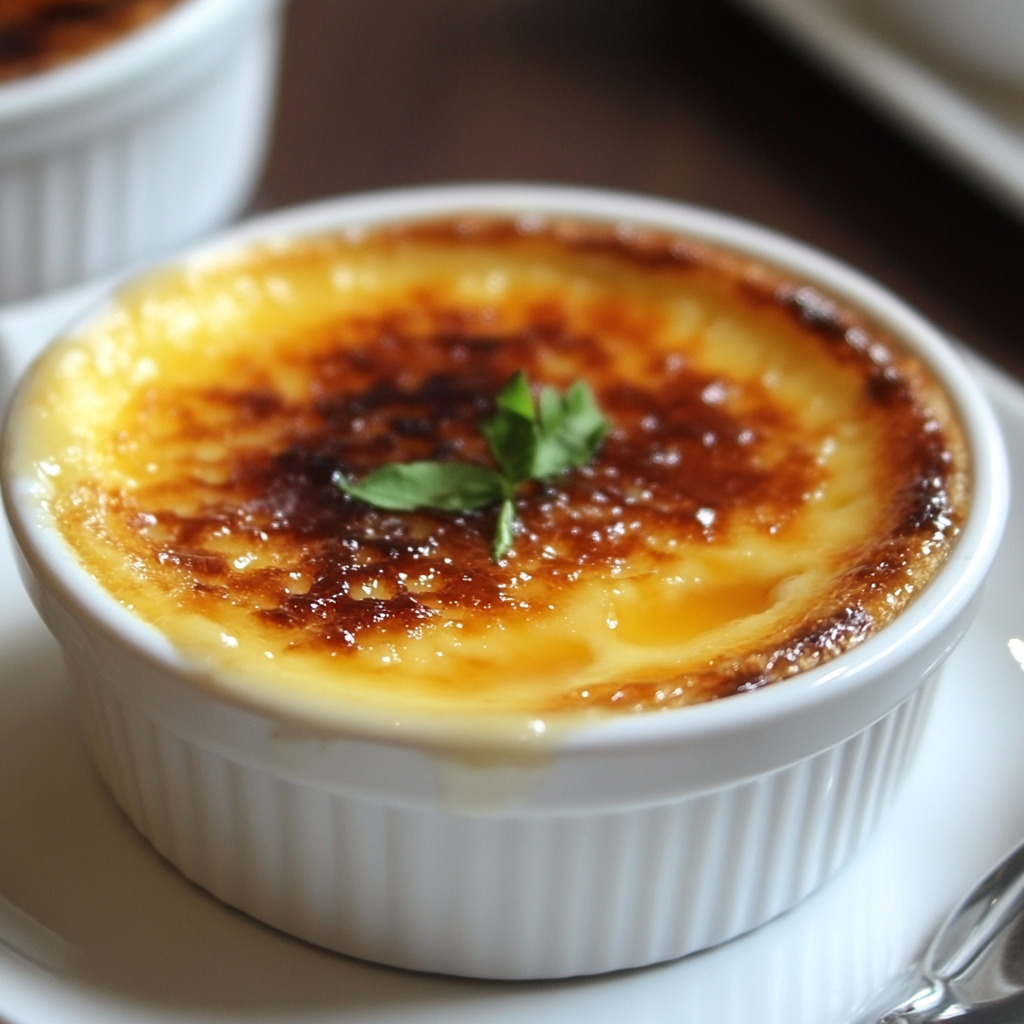
Crème brûlée, meaning “burnt cream” in French, is a luxurious dessert featuring a rich, velvety custard topped with a hardened caramelized sugar crust. It has been a staple of French cuisine since the 17th century and remains a symbol of elegance and sophistication.
Key Characteristics:
- Made with heavy cream, egg yolks, and sugar.
- Baked in a water bath to achieve a smooth, creamy texture.
- Topped with sugar, which is torched or broiled to create a hard, caramelized layer.
The contrast between the crisp sugar crust and the soft custard is what makes crème brûlée an unforgettable experience. For an in-depth look at how this dessert is crafted, explore this Secret of Crème Brûlée for tips and tricks.
What Is Flan?
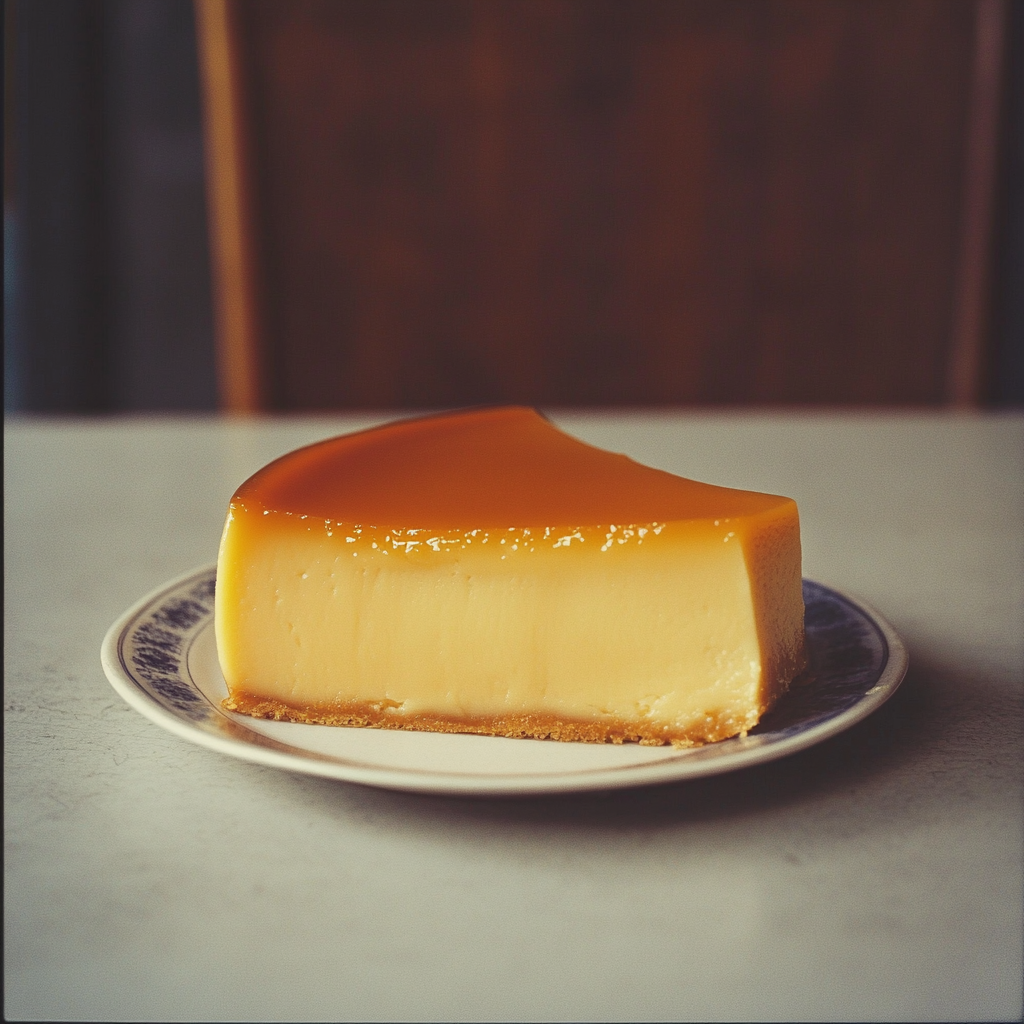
Flan, also known as crème caramel, is a classic dessert with roots in Spanish and Latin American cuisine. It features a smooth, gelatin-like custard topped with a soft caramel syrup. Unlike crème brûlée, flan is inverted onto a plate, allowing the caramel sauce to flow over the custard, creating a glossy finish.
Key Characteristics:
- Made with milk, eggs, and sugar.
- Baked with a layer of caramel syrup at the bottom of the mold.
- Served inverted so that the caramel sauce becomes the topping.
Flan’s light texture and sweet caramel flavor make it a comforting and versatile dessert enjoyed across cultures. If you’re curious about experimenting with custard-based dishes, consider trying a unique take with this delicious Vanilla Bean Paste Recipe for added flavor depth.
Both crème brûlée and flan showcase the beauty of custards but offer completely different eating experiences. Understanding their nuances can help you appreciate their rich culinary traditions even more.
Key Differences Between Crème Brûlée and Flan
While crème brûlée and flan share a custard base, they are distinct desserts with unique characteristics. From texture to toppings and presentation, each offers a different culinary experience. Below, we explore the key differences that set these two beloved desserts apart.
Texture: Silky vs. Creamy
- Crème Brûlée: Known for its silky, velvety texture, crème brûlée is made with heavy cream that gives it a rich, smooth mouthfeel. The custard is soft-set and delicate, melting in your mouth with every bite.
- Flan: Flan has a firmer, gelatin-like texture due to the use of milk or evaporated milk in its recipe. Its consistency is slightly more structured, holding its shape when inverted onto a plate.
The texture difference is a result of the ingredients and preparation methods used, with crème brûlée leaning toward luxury and flan toward comfort.
Topping: Caramelized Sugar vs. Caramel Sauce
- Crème Brûlée: Features a signature caramelized sugar crust that is torched or broiled to create a hard, brittle layer. The crisp topping contrasts beautifully with the soft custard underneath, adding a satisfying crunch to every bite.
- Flan: Topped with soft caramel sauce that forms during baking. This sauce provides a sweet, smooth finish that complements the firm custard texture.
The topping is where these desserts truly diverge—crème brûlée delights with crunch, while flan offers a flowing, glossy caramel layer. To learn more about creating perfect caramel toppings, explore the Secret of Crème Brûlée.
Ingredients: A Comparison of Recipes
- Crème Brûlée: Made with heavy cream, egg yolks, sugar, and sometimes vanilla extract. The cream contributes to its luxurious, creamy texture.
- Flan: Typically made with milk, eggs, sugar, and sometimes sweetened condensed milk or evaporated milk. This combination gives flan its lighter, firmer consistency.
The choice of ingredients is critical in defining each dessert’s flavor and texture. For a traditional approach, check out this step-by-step Crème Brûlée Recipe or experiment with custard variations like flan.
Presentation and Serving Styles
- Crème Brûlée: Served in individual ramekins with the caramelized sugar crust on top, crème brûlée is a dessert designed for elegance and personal servings. The untouched sugar crust adds a pristine, refined appearance.
- Flan: Baked in a single dish or mold, flan is inverted onto a plate for serving, allowing the caramel sauce to flow over the custard. This presentation is more rustic and communal, often enjoyed at family gatherings or celebrations.
Each dessert’s presentation reflects its cultural roots: crème brûlée’s refined style mirrors its French origins, while flan’s simplicity aligns with its widespread popularity in Spanish and Latin American households.
These differences highlight the unique appeal of crème brûlée and flan, showing that while they may share a custard base, they are distinct in flavor, texture, and style. Whether you prefer the sophistication of crème brûlée or the homely charm of flan, both desserts offer an unforgettable taste experience.
Ingredients and Preparation: Key Differences
Ingredients
While both desserts share common ingredients, their ratios set them apart:
- Crème Brûlée: Made with heavy cream for a rich, velvety texture.
- Flan: Often uses milk or evaporated milk, making it lighter and firmer.
Preparation
- Crème Brûlée:
- Baked in a water bath to ensure even cooking.
- Topped with sugar, which is caramelized using a blow torch.
- Flan:
- Baked with a layer of caramel sauce at the bottom.
- Inverted onto a plate so the caramel flows over the custard.
Want to know the secret to perfect caramelization? Explore the top tips for custard desserts in this Crab Brûlée Recipe.
Taste and Texture: Creamy vs. Firm
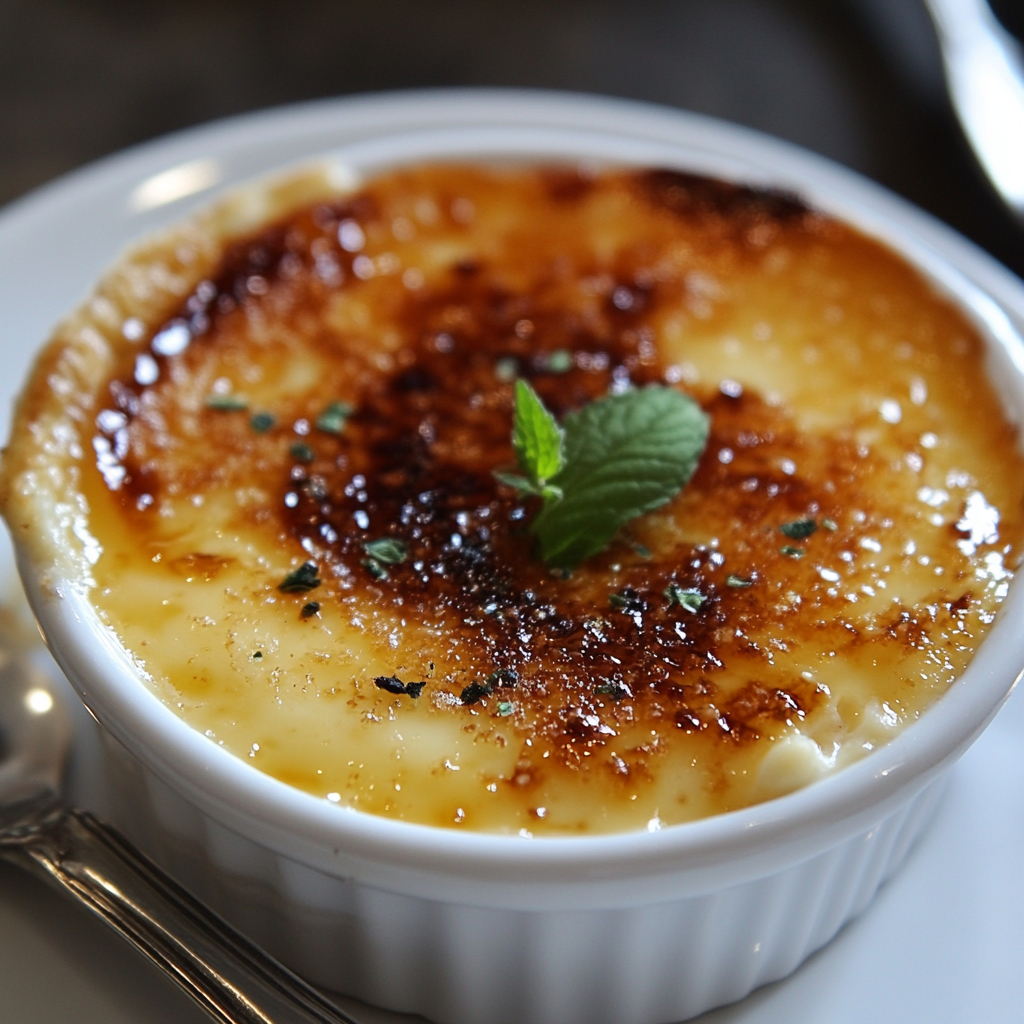
Crème Brûlée
- Rich, creamy, and indulgent.
- The crunchy caramelized sugar provides a beautiful contrast to the custard.
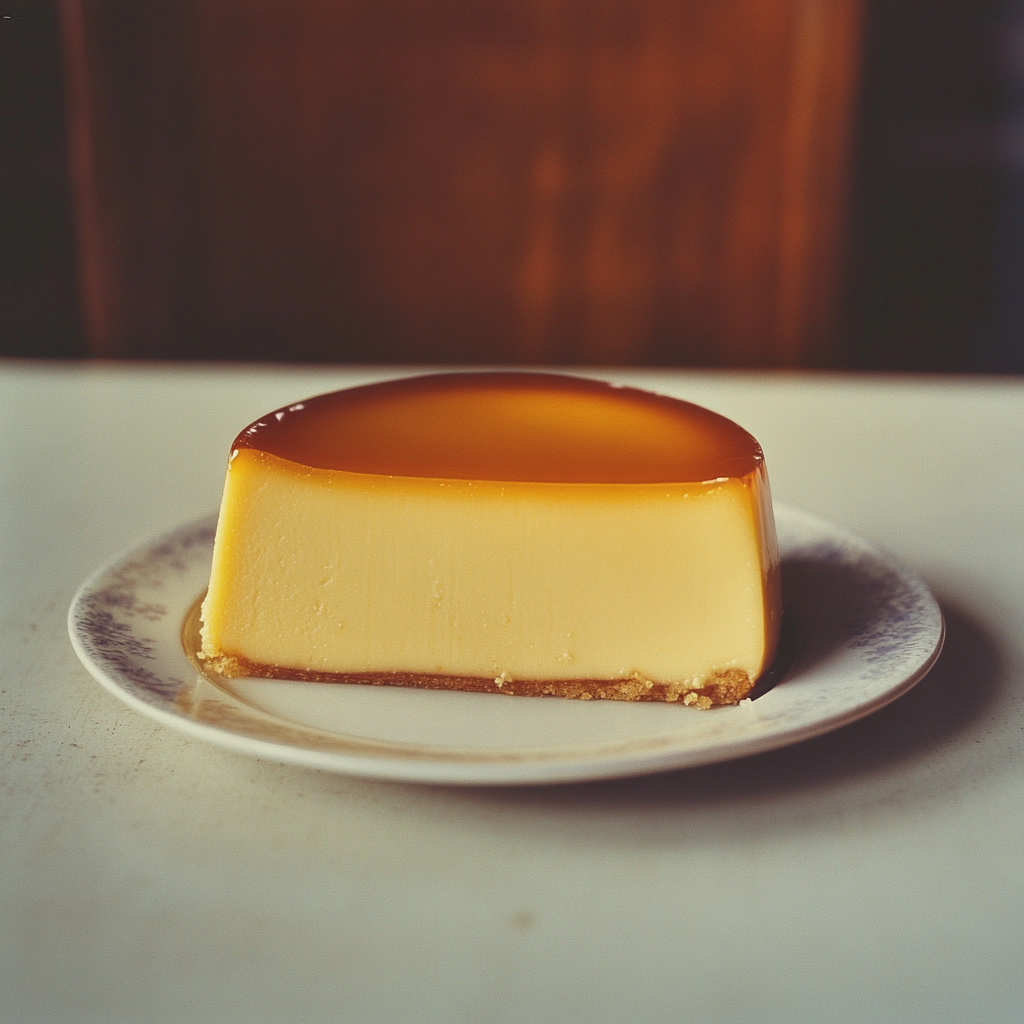
Flan
- Lighter, firm, and jelly-like.
- The liquid caramel adds a subtle sweetness and enhances the custard flavor.
For another unique custard experience, check out this guide on What Does Crème Brûlée Taste Like?.
The Cultural Significance of Crème Brûlée and Flan
Crème Brûlée: A French Masterpiece
Originating in 17th-century France, crème brûlée has become synonymous with sophistication and fine dining. The hard caramelized topping reflects the precision and elegance of French cuisine.
Flan: Spain and Latin America’s Treasure
Flan, or crème caramel, has deep roots in Spanish and Latin American cuisine. Its versatility has led to unique regional adaptations, such as flan de coco in Puerto Rico or condensed milk variations in Mexico.
For more insight into caramel-based desserts, explore the creative approaches used in this Vanilla Bean Paste Recipe.
Crème Brûlée vs. Flan: At a Glance
| Feature | Crème Brûlée | Flan |
|---|---|---|
| Texture | Creamy and velvety | Firm and jelly-like |
| Topping | Hard caramelized sugar | Liquid caramel sauce |
| Ingredients | Heavy cream, egg yolks, sugar | Milk, eggs, sugar |
| Cooking Method | Baked and torched | Baked and inverted |
Health and Nutritional Aspects
While crème brûlée and flan are indulgent desserts, understanding their nutritional profiles can help you make informed choices. From calorie counts to ingredient substitutions, here’s a closer look at their health aspects and tips for making lighter versions.
Calorie Comparison
The calorie content of these desserts varies depending on their ingredients and serving size:
- Crème Brûlée:
- Typically higher in calories, with an average serving containing 250-350 calories.
- The use of heavy cream and sugar contributes to its rich, creamy texture but also adds more fat and calories.
- Flan:
- Slightly lower in calories, ranging from 200-300 calories per serving, depending on the recipe.
- Flan often uses milk or evaporated milk, making it lighter in fat compared to crème brûlée.
If you’re looking for a lower-calorie treat, flan might be the better option. For more inspiration on incorporating healthier desserts, explore Vanilla Bean Paste Recipes for creative ideas.
Substitutions for Healthier Alternatives
Both desserts can be made lighter with a few simple substitutions:
- For Crème Brûlée:
- Replace heavy cream with a mixture of milk and Greek yogurt to reduce fat content.
- Use a sugar substitute, like stevia or monk fruit, for a lower-calorie option.
- Reduce the amount of sugar used for caramelizing the topping.
- For Flan:
- Swap whole milk with unsweetened almond milk or oat milk for a dairy-free version.
- Replace condensed milk with light coconut milk for a tropical twist and reduced calories.
- Use maple syrup or honey as a natural sweetener instead of refined sugar.
For more tips on making nutritious variations of custard-based dishes, check out this guide to Low-Histamine Recipes for dietary-friendly options.
By understanding the nutritional differences and incorporating healthier alternatives, you can enjoy crème brûlée or flan guilt-free while still savoring their delicious flavors. Whether you prefer the indulgence of crème brûlée or the lighter profile of flan, both desserts can be adjusted to suit your dietary needs.
FAQs About Crème Brûlée and Flan
What’s the Difference Between Flan and Custard?
While flan and custard share a similar creamy base made from eggs, milk, and sugar, they differ in texture and presentation:
- Custard is a broad term for any dessert with a creamy egg-based mixture that can be baked or cooked on a stovetop.
- Flan is a specific type of custard baked with a layer of caramel sauce on the bottom, which becomes the topping when inverted.
Flan has a firmer, gelatin-like texture due to the baking process, while custard remains smooth and soft-set.
For a detailed comparison of custards, including crème brûlée, visit What’s the Difference Between Crème Brûlée and Custard?.
Is Crème Brûlée Basically Custard?
Yes, crème brûlée is a type of custard, but with a unique twist.
- Custard refers to the creamy dessert made from egg yolks, sugar, and cream or milk.
- Crème brûlée takes custard a step further by adding a caramelized sugar topping, creating a delightful crunch that contrasts with the velvety custard underneath.
For tips on achieving the perfect caramelized top, check out this classic Crème Brûlée Recipe.
What is the Difference Between Flan, Crème Brûlée, and Panna Cotta?
These three desserts share a creamy texture but differ in ingredients, preparation, and presentation:
- Flan:
- Made with milk, eggs, and sugar.
- Baked with a liquid caramel layer, which becomes the topping when inverted.
- Firm and gelatin-like texture.
- Crème Brûlée:
- Made with heavy cream, egg yolks, and sugar.
- Features a hard caramelized sugar crust torched on top.
- Rich and creamy texture.
- Panna Cotta:
- An Italian dessert made with cream, sugar, and gelatin.
- No eggs are used, and it is set with gelatin instead of baking.
- Silky and slightly jiggly consistency.
If you’re a fan of custard-based desserts, you’ll love exploring variations like the vanilla bean panna cotta or this creative Crab Brûlée Recipe.
What Is Flan Comparable To?
Flan is often compared to other custard-based desserts because of its similar ingredients and texture. Some common comparisons include:
- Crème Caramel: Nearly identical to flan, as it features a baked custard with a caramel syrup topping.
- Crème Brûlée: Similar custard base, but crème brûlée has a hard sugar crust instead of a liquid caramel topping.
- Pudding: While pudding shares a creamy texture, it is typically made with cornstarch as a thickener instead of eggs.
Flan’s smooth and sweet caramel sauce sets it apart, making it a favorite in Latin American and Spanish cuisine. For a twist on custards, explore the decadent Vanilla Bean Paste Recipe to add flavor depth to your next dessert.
These FAQs clarify the distinctions between custard, crème brûlée and flan, and panna cotta, helping you appreciate the subtle differences and enjoy each dessert to its fullest.
Conclusion
While crème brûlée and flan share similar ingredients and cooking techniques, they are unique desserts with distinct textures, toppings, and cultural backgrounds. Whether you’re craving the velvety creaminess of crème brûlée or the firm, sweet simplicity of flan, each dessert offers a unique experience worth savoring.
For your next dessert experiment, consider trying the authentic Crème Brûlée Recipe or exploring other caramel-based delights to satisfy your sweet tooth!

